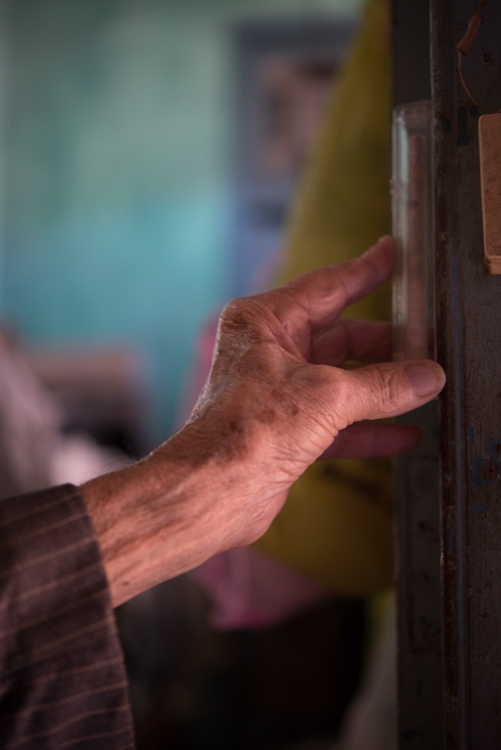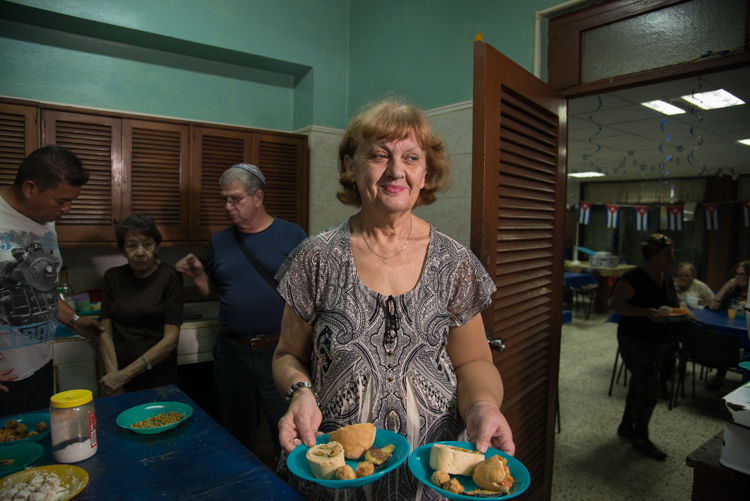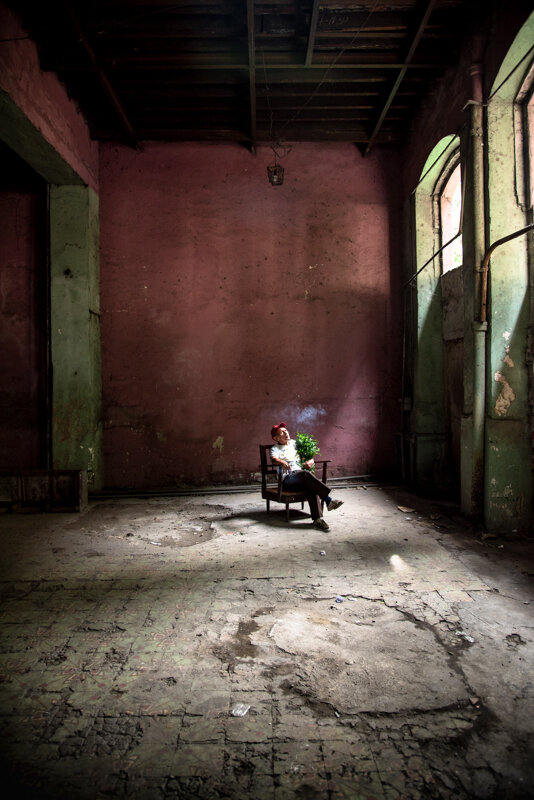Boundaries
In "Boundaries," I present a closed religious community which lives in the ghetto - as a closed-off and isolated community. They close themselves off from the outside world, and the western world isolates them from it. To the world they seem strange and foreign and therefore they are frightening and worrisome. Their world intrigues me very much, I am also a religious Jew, but not like them. They are called 'ultra-orthodox.' I had rare opportunities to photograph them at a personal tisch that only a few are invited to. As a woman I sat in the women's section. I experienced the tisch from the female point of view. The men are the ones who sang and danced, tasted the challah and tasted the wine which was poured for the most distinguished of those gathered. - The women sat upstairs and could observe the celebration only through the glass. But I still felt that the women around me were excited by the size of the gathering. In the public space the joy was different, the families were like any normal family I know, the fathers played with the children, the women chatted and served food, I observed their intimate moments, in personal prayer in the public garden, and in loving embrace in view of the sea. Only their clothes were different. The men with white shirts and tzitzit sticking out, and the women with long skirts and head coverings. I felt that they needed to create boundaries between themselves and the world and differentiate themselves from us in order to have an identity different from ours. And it is easier for them to create a sense of belonging to a community, a community other than mine. Are differentiation and boundary-setting the key to creating an identity, or is it rather the opposite?
Keeping The Flame
In Cuba, I was exposed to a small Jewish community, one of the smallest in the world. They serve as a proof that when a community sticks together, they can overcome anything. I realized then the importance of having a community as support, and this inspired me further to tell the story of the Jewish people and community. They showed me that even with limited resources, the importance that the Jewish traditions play in who they are and what they believe in. Furthermore, it showed me how vital it is for us, as a nation, to pass down our traditions even when it is difficult, because if not for us, they will not exist.
With the images from my project "keeping the Flame", I created a movie called, "But I Am Here". The movie examines the challenges of the Jewish community in Cuba and it is also a reflection on my journey of faith. A glimpse of the movie!
My goal is to write a book memorializing this community on the verge of decline, and to create an exhibit that could be shown in a museum or Jewish foundation. Contact info
A wiiner project at the Pollux Awards 2019.
March 4 -28,2020 Exhibition at the FotoNostrum Gallery in Barcelona.
December 10 2019 Bnai Brith - Magazine , Winter Cuba
Keeping The Flame
Open Show LA presentation about the small Jewish community in Cuba



























